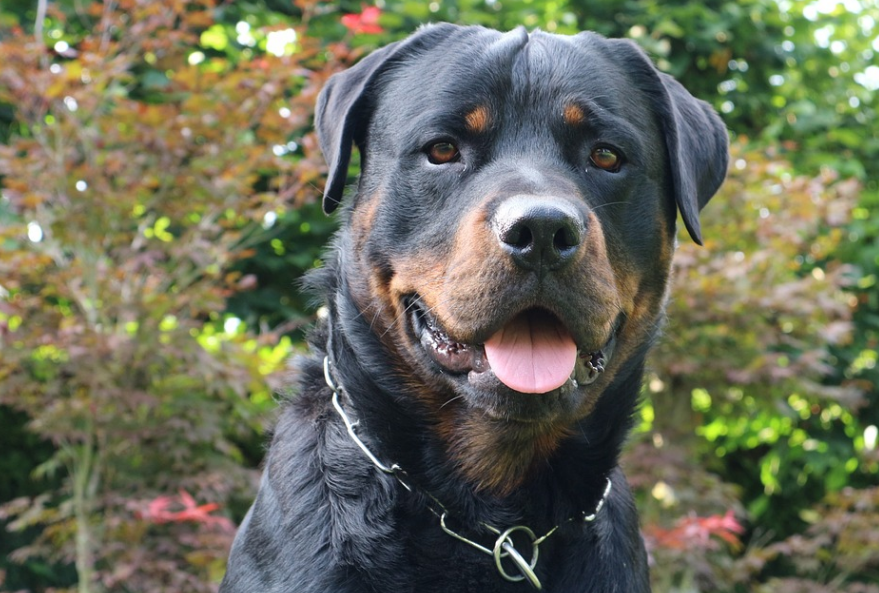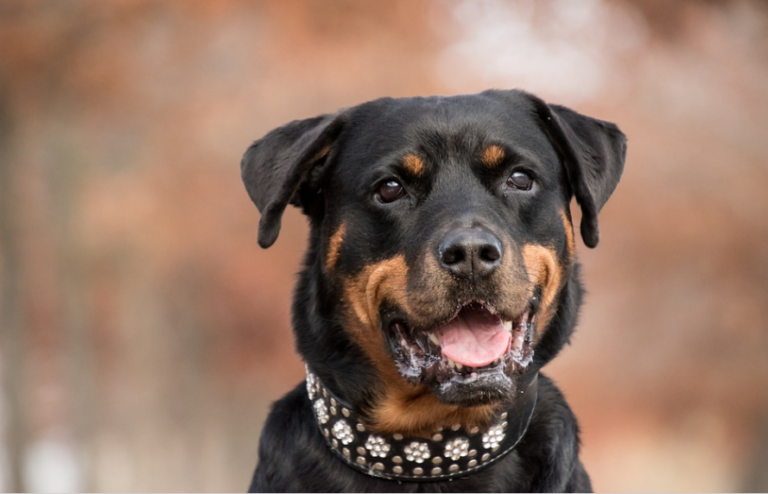Rottweilers are known for their strength, loyalty, and intelligence. Understanding their behavior is essential for building a strong bond with them. These dogs are not just protective; they also have unique ways of expressing themselves. Whether you're a seasoned owner or a curious admirer, grasping the nuances of Rottweiler behavior can enrich your relationship with these incredible animals. Let's dive deeper into what makes them tick!
What Does Rumble Mean in Dogs?

You might have heard your Rottweiler making low, throaty sounds that resemble a rumble. But what does this actually mean? Rumbles in dogs often serve as a form of communication, and in Rottweilers, it can indicate several things:
- Playfulness: Sometimes, a rumble indicates that your Rottweiler is ready to play. It’s a friendly sound that often accompanies playful behavior, like bounding around or play-bowing.
- Contentment: If your Rottweiler is relaxed and rumbling softly while curled up beside you, it might be their way of expressing happiness and contentment. Think of it as their version of a satisfied sigh.
- Alertness: On the other hand, a rumble can also mean your Rottweiler is on guard. If they’re watching something intently, this could be their way of signaling that they’re alert and ready to protect you.
It’s essential to pay attention to the context in which the rumbling occurs. For example, if your Rottweiler is rumbling while interacting with another dog, it might be a sign of excitement or friendship. However, if it's rumbling while facing a stranger, it may be asserting dominance or indicating a protective instinct.
To further understand this behavior, consider the body language that accompanies the rumble. A wagging tail and relaxed ears generally signal that your dog is happy, while a stiff posture or raised hackles may suggest tension or aggression. This combination of vocalizations and body language can help you decode your Rottweiler's feelings and intentions.
In conclusion, the rumble is just one of the many fascinating ways Rottweilers communicate. By observing your dog closely, you can gain insights into their mood and needs, fostering a stronger and more harmonious relationship. So next time you hear that rumble, take a moment to consider what it might mean! Your Rottweiler is trying to tell you something important.
Also Read This: How Do I Get Rumble? A Step-by-Step Guide to Accessing Rumble on Your Devices
3. Common Causes of Rottweiler Rumbles

Rottweilers are known for their robust nature and distinct vocalizations, often referred to as "rumbles." These sounds can mean a myriad of things, and understanding the underlying causes is crucial for any Rottweiler owner. Here are some common causes of these rumbles:
- Excitement: One of the primary reasons for a Rottweiler’s rumble is sheer excitement. Whether it’s playtime with their favorite toy or the arrival of a beloved family member, Rottweilers often express their joy through low, rumbling growls. For instance, if you’ve just come home after a long day, expect your furry friend to give you a hearty rumble of delight!
- Communication: Rottweilers are vocal dogs. They use rumbles to communicate with other dogs and humans. If they’re rumbled while playing, it could mean they’re inviting others to join in the fun or signaling that they’re having a good time. This is especially common in playgroups where different dogs interact freely.
- Territorial Behavior: Rottweilers are natural protectors, and sometimes, their rumbles can indicate a protective or territorial instinct. If a stranger approaches your home or another dog comes too close for comfort, you might hear deep rumbles as your Rottweiler asserts their space. This behavior is rooted in their guarding instincts.
- Discomfort or Pain: Occasionally, a rumble can indicate discomfort. If your Rottweiler is rumbling while being petted or during certain movements, it might be a sign that they’re experiencing pain or discomfort. Monitoring their behavior closely during these times is essential to ensure they’re not hurt.
- Fear or Anxiety: Just like any other dog, Rottweilers can feel fear or anxiety. Rumbles in this context might indicate that they’re feeling threatened or unsure about their surroundings. Recognizing the signs of fear can help you provide reassurance and comfort.
Understanding these causes helps you develop a deeper bond with your Rottweiler and manage their behavior effectively. Always pay attention to the context of the rumble, as it can give you valuable insights into what your dog is feeling.
Also Read This: How Many Royal Rumbles Has John Cena Participated in Throughout His Career?
4. How to Differentiate Between Play and Aggression
It’s essential to differentiate between playful rumbles and aggressive ones to ensure a safe environment for your Rottweiler and others. Here are some key indicators to help you distinguish between play and aggression:
- Body Language: A playful Rottweiler will have a loose, relaxed posture. Look for a happy wagging tail, playful bounces, and an overall energetic demeanor. In contrast, an aggressive Rottweiler may show stiff body language, raised hackles, and a rigid posture. If their tail is low and tucked, it’s a sign of fear rather than playfulness.
- Vocalizations: Playful rumbles are typically accompanied by other happy vocalizations, like barks or yips. If the rumble is low, deep, and continuous without breaks, it might indicate aggression. Pay attention to the tone; a playful growl sounds different from a warning growl.
- Context of Interaction: Consider what’s happening when the rumble occurs. If your Rottweiler is playing with another dog and both seem to be enjoying themselves, it’s likely playful. However, if one dog is trying to back away and the other continues to rumble aggressively, it’s a sign of potential aggression.
- Duration: Playful interactions often have a rhythm, with pauses and breaks. If the rumbling is prolonged and doesn’t transition to other behaviors, it might be a sign of aggression.
- Teeth Display: If your Rottweiler shows teeth during a rumble, it’s essential to assess the situation carefully. A wide grin can indicate play, but a snarl or bared teeth can signal aggression. Always consider the overall context.
Being aware of these signs will help you navigate playtime with your Rottweiler safely. Remember, you know your dog best—trust your instincts!
Also Read This: Where Was the 2024 Royal Rumble? Location and Venue Information
5. Tips for Managing Rottweiler Rumbles
Rottweilers are known for their loyalty and strength, but they can also have their fair share of vocal outbursts, which we lovingly refer to as "Rottweiler rumbles." If your furry friend is rumbling away, here are some practical tips to help you manage this behavior effectively:
- Recognize Triggers: Start by observing what causes your Rottweiler to rumble. Is it a certain person, animal, or situation? Understanding these triggers can help you anticipate and manage the behavior.
- Redirect Attention: When your Rottweiler starts to rumble, redirect their attention to a toy or engage them in a game. This not only distracts them but also keeps them mentally stimulated.
- Establish a Calm Environment: Create a serene space for your Rottweiler where they can feel safe and relaxed. Sometimes, rumbles can stem from anxiety or overstimulation, so providing a safe haven can work wonders.
- Use Positive Reinforcement: Reward your Rottweiler with treats or praise when they remain calm in situations that typically trigger rumbles. This encourages them to associate calmness with positive outcomes.
- Consistency is Key: Be consistent in your training and responses. If you allow rumbles at home but not in public, it can confuse your pup. Set clear boundaries that you maintain in all environments.
By implementing these tips, you can help your Rottweiler manage their rumbles and maintain a peaceful household. Remember, patience and understanding are essential as your furry friend learns to navigate their emotions.
6. When to Seek Professional Help
While some degree of rumbling is normal for Rottweilers, there are instances where it may indicate deeper issues that require professional intervention. Here are some signs to watch for:
- Excessive Rumbling: If your Rottweiler is rumbling excessively or aggressively, it may be time to consult a professional. This could indicate underlying anxiety or behavioral issues that need expert guidance.
- Impacting Daily Life: If the rumbles are affecting your everyday life—like disturbing neighbors or causing stress during walks—professional help can provide strategies to manage these situations effectively.
- Changes in Behavior: Sudden changes in your Rottweiler’s behavior, such as increased rumbling or a shift in temperament, may signal health issues or emotional distress. A vet or animal behaviorist can assist in identifying the root cause.
- Unsuccessful Training Attempts: If you’ve tried various training techniques without success, it might be time to enlist the help of a professional trainer or behaviorist who specializes in Rottweilers.
- Concerns for Safety: If your Rottweiler’s rumbles escalate to aggressive behavior, prioritize safety by seeking professional help immediately. It’s essential to ensure everyone’s well-being.
Remember, reaching out for professional assistance is a proactive step in ensuring a happy and healthy relationship with your Rottweiler. There’s no shame in seeking help, and it can make a world of difference for both you and your furry companion.
 admin
admin








